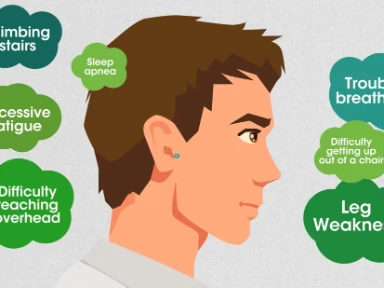Differential diagnostics for ASMD in patients suspected to have GD

Objective
- To demonstrate benefits of differential diagnosis within primary diagnostic testing.
- To improve detection rate of potential ASMD, avoid diagnostic delays.
A multicenter, prospective study
DBS testing
- GBA enzyme activity
- ASM enzyme activity
Positive Cases
- Improve detection rate of potential
- ASMD Avoid diagnostic delays

Results
Genetic confirmatory testing done for 5933 cases
| SMPD1 gene sequencing for 1171 cases | GBA gene sequencing for 4762 cases |
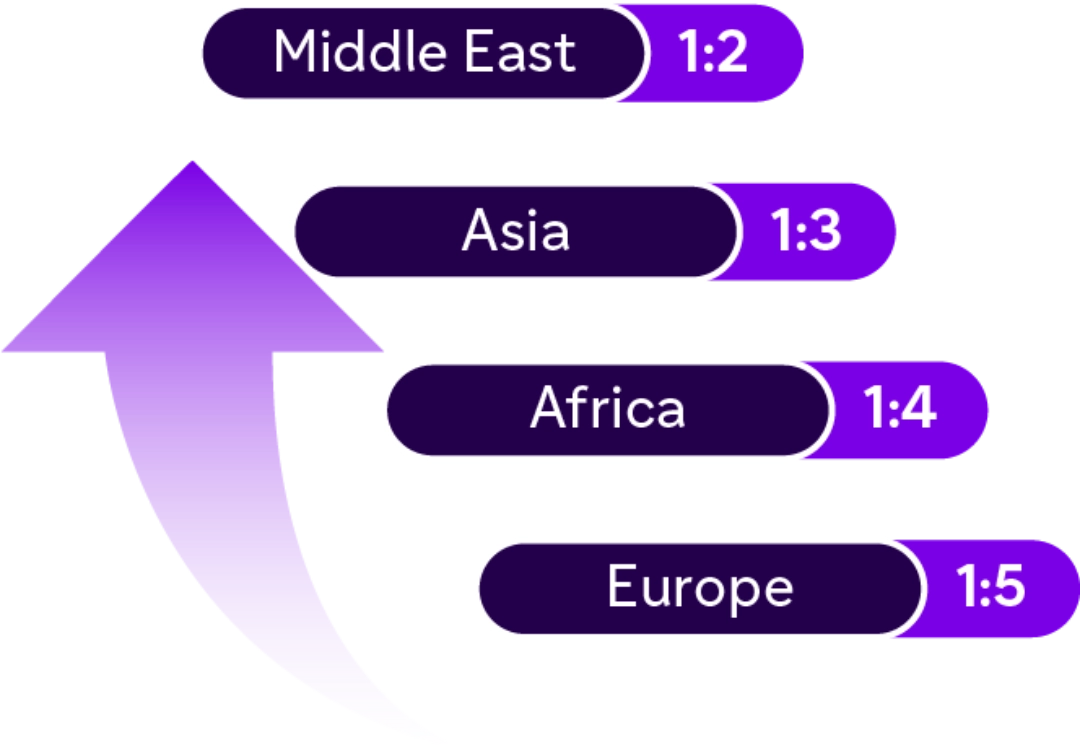
ASMD:GD varies by region
Overall, 1 out of 4 patients with suspected GD suffered from ASMD.
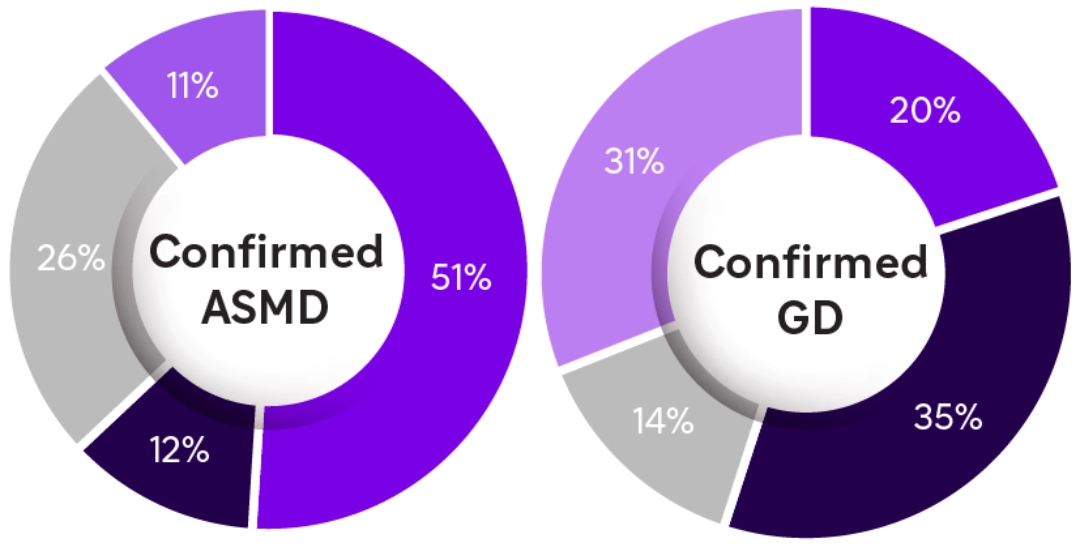
Overall, 51% of ASMD cases were newborns.
 <28 days <28 days |  28 days to <10 years 28 days to <10 years |
 10-18 years 10-18 years |  >18 yeras >18 yeras |
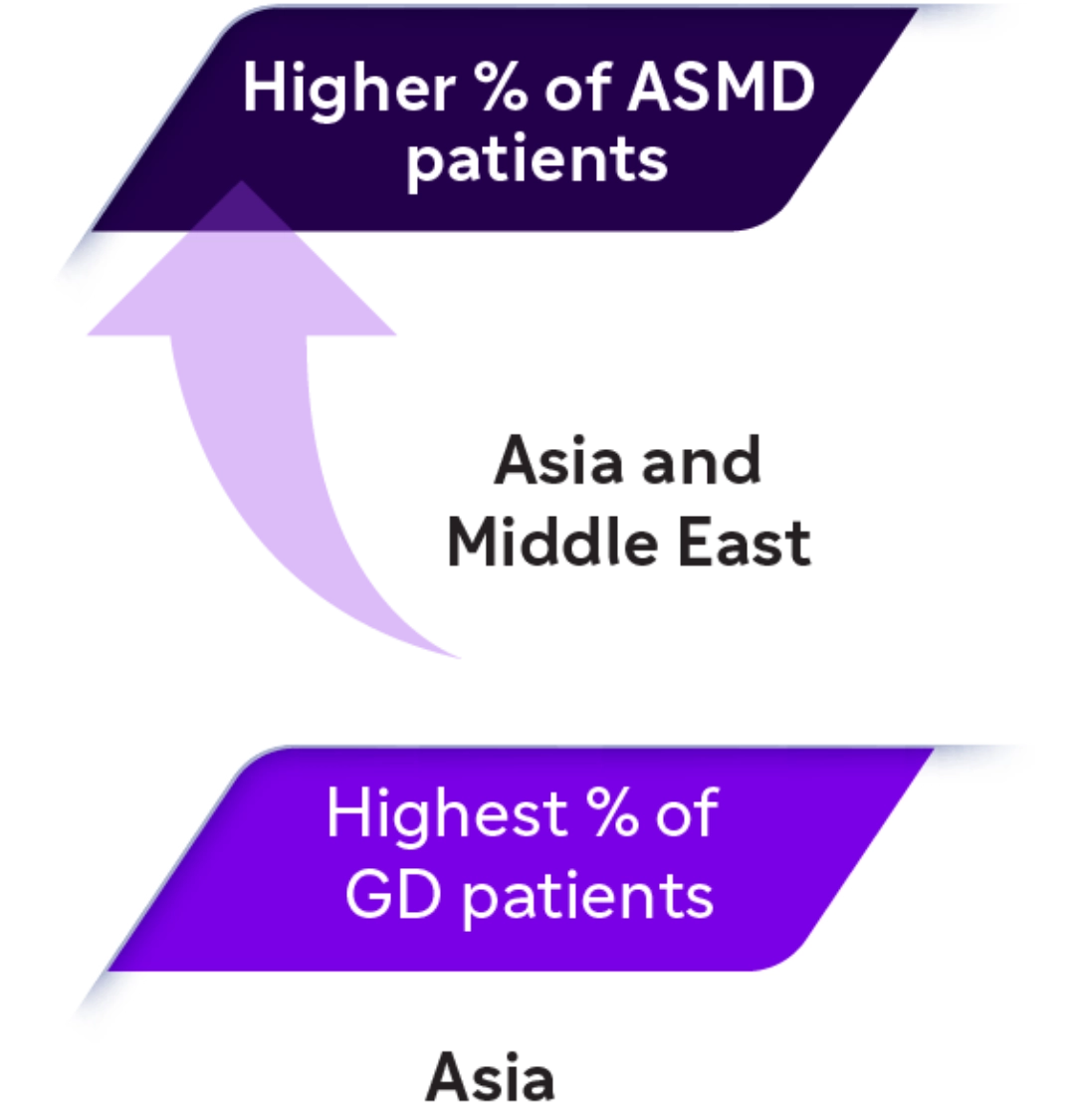
5933 symptomatic cases showed decreased enzyme activities
227 distinct SMPD1 sequence variants identified
10 more frequent variants
Most of the cases with ASMD from the Middle East were newborns and with GD were adults.
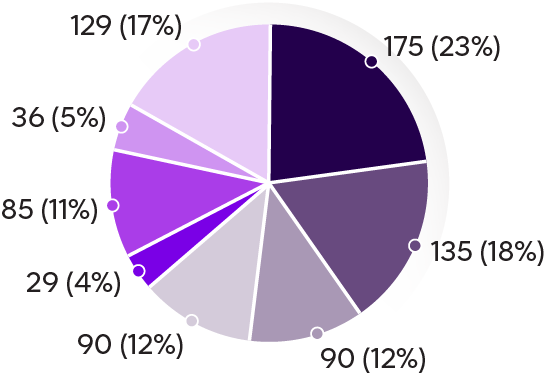
Color by:
| Gene-ID | Age group |
 GBA Adults (>18 years) GBA Adults (>18 years) |
 GBA Children (below 10 years) GBA Children (below 10 years) |
 GBA Children/adolescents (10–18 years) GBA Children/adolescents (10–18 years) |
 GBA Newborns GBA Newborns |
 SMPD1 Adults (>18 years) SMPD1 Adults (>18 years) |
 SMPD1 Children (below 10 years) SMPD1 Children (below 10 years) |
 SMPD1 Children/adolescents (10–18 years) SMPD1 Children/adolescents (10–18 years) |
 SMPD1 Newborns SMPD1 Newborns |
Higher number of confirmed ASMD patients in Pakistan, Iraq, Turkey, and Iran
Egypt had the highest number of GD cases followed by Turkey, while Iraq had the highest number of ASMD cases.
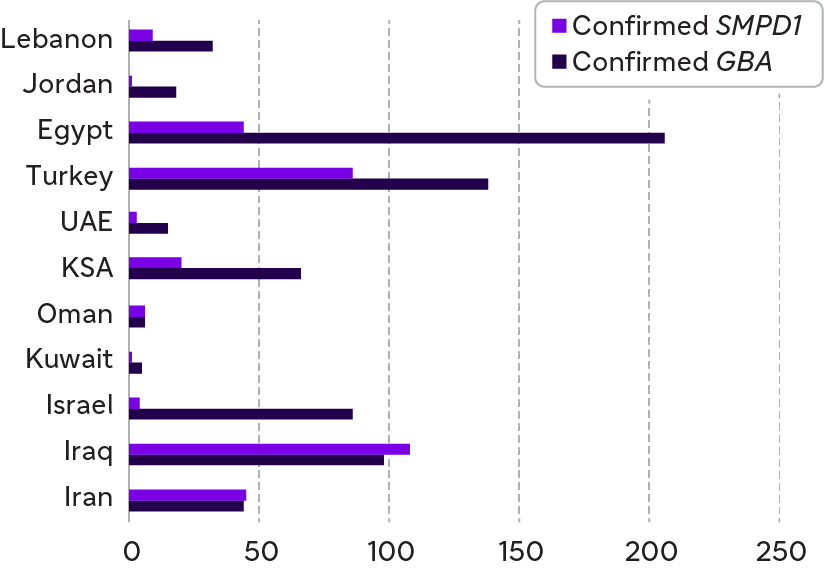
Conclusion

ASM: Acid sphingomyelinase; ASMD: Acid sphingomyelinase deficiency; DBS: Dried blood spots; GBA: Acid- -glucocerebrosidase; GD: Gaucher disease; KSA: Kingdom of Saudi Arabia; SMPD1: Sphingomyelin phosphodiesterase 1; UAE: United Arab Emirates.
- Oliva P, Schwarz M, Mechtler TP, et al. Importance to include differential diagnostics for acid sphingomyelinase deficiency (ASMD) in patients suspected to have to Gaucher disease. Mol Genet Metab. 2023;139(1):107563.
